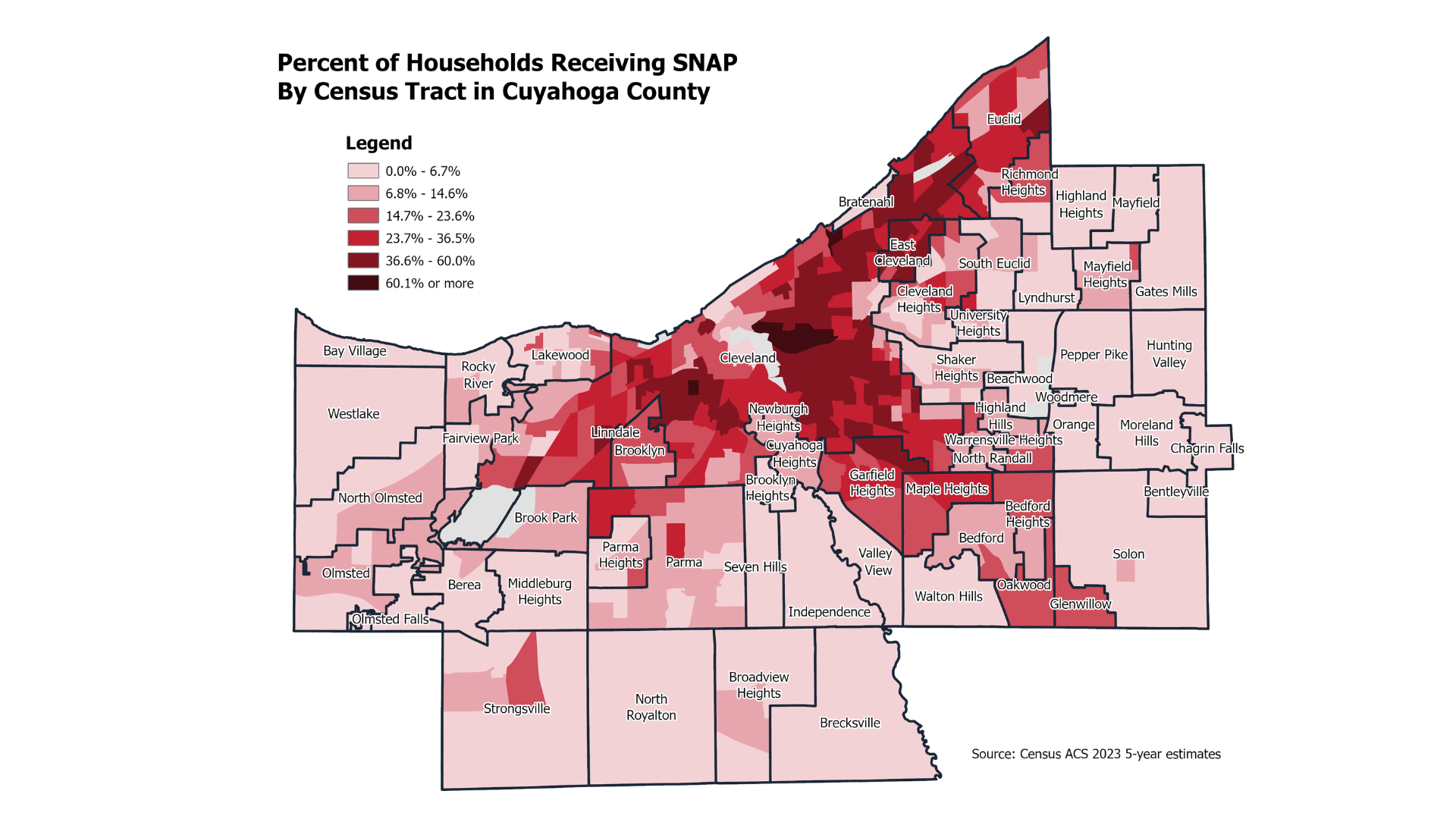The Ohio Department of Medicaid is scheduled to return to routine procedures in March. There are pressing decisions to be made regarding what those routine procedures will look like.On January 30, 2024, Health Policy Institute of Ohio (HPIO) sponsored a webinar, “A closer look at Medicaid unwinding in Ohio.” Patrick Beatty, Deputy Director, The Ohio Department of Medicaid and Jim Ashmore, Policy Director, Ohio Job and Family Services Directors' Association (ODJFSDA), convened to discuss the end of Medicaid unwinding.
Ohio has the seventh largest Medicaid enrollment in the nation.
How is Ohio doing at the state level?
Ohio has the seventh largest Medicaid enrollment in the nation. Beatty shared that Medicaid enrollment increased by 30% during COVID. Beatty described how letters sent from both CMS and Secretary Becerra regarding Ohio Department of Medicaid’s progress pointed out that there were challenges, but how the data contained in those letters may not have correlated with the challenges described. He described The Ohio Department of Medicaid as being put into a “bucket” without identifying the issues. Ohio is currently using many of the suggestions described in the letter, according to Beatty. “There’s nothing in that letter… that says we should do anything that we weren’t already doing,” said Beatty. The CMS letter was described as “odd” because the stats identified in the call center wait times “were not bad.”In fact, ex parte data from November and December 2023 showed the first full months of “system change” resulting from the efforts of the Ohio Department of Medicaid being able to identify procedurally disenrolled individuals and re-enroll them. The year-end ex parte renewal rates showed that only 19 percent of ex-parte data needed to be re-reviewed. Beatty stated that this percentage is now down to 11 percent.As of January 2024, the Ohio Department of Medicaid is completing about 58 percent of renewals using ex parte data. Though, ex parte data has not been the only tool the Department of Medicaid used during Medicaid unwinding.Beatty described how Ohio is currently utilizing the following 1902(E)(14)(A) waivers to prevent erroneous terminations:
- Renewing Medicaid eligibility based on financial findings from SNAP (Supplemental Nutrition Assistance Program)Renewing Medicaid eligibility for individuals with no income and no data returned on an ex parte basis ($0 income strategy)
- Renewing Medicaid for individuals when the Asset Verification System (AVS) is not returned
- Permitting managed care plans to assist individuals in completing and submitting Medicaid renewal forms
- Expanding outreach by using managed care plans and calls, text, and email
With the scheduled return of routine operations set for March 2024, renewals in January 2024 will be the last to be redetermined via the full unwinding process.
Renewals in January 2024 will be the last to be redetermined via the full unwinding process.
Along with letters from CMS and Secretary Becerra came more discussions about the impacts on children who are erroneously disenrolled from Medicaid. Patrick Beatty stated that the efforts the Department of Medicaid has been taking to maintain children’s enrollment is “the best that we possibly can.”
How is Ohio doing at the county level?
Jim Ashmore, Policy Director, ODJFSDA, discussed the combined effort between county government and the Ohio Department of Medicaid. He described the “strategic thinking” that has made Ohio effective during the unwinding process. Even so, case churning issues persist. Individuals are once again cycling on and off Medicaid. People are once again suddenly discovering that they are no longer enrolled in Medicaid after showing up to pick up a prescription at a pharmacy. Ashmore alluded to how this episodic enrollment could be due to issues with paperwork overall. He mentioned there could be an opportunity to reexamine the paperwork to make it simpler.During the pandemic, state funding flowed into the counties to allow them to have the resources to meet citizens' needs. County engagement managers meet with representatives from the Department of Medicaid to check in on “the good, bad, and ugly” in hopes of trying to avoid caseworkers being “at a loss” and to build an even stronger partnership between Ohio Department of Job and Family Services (ODJFS) and the Department of Medicaid. Throughout unwinding, biweekly check-ins between leadership at the Department of Medicaid and ODJFS have been pivotal.
As a general rule, Medicaid is Medicaid.
“As a general rule, Medicaid is Medicaid, but when we look at the general categories, it can get overwhelming (for consumers),” said Ashmore. During this entire process, new applications have still been coming in through various mediums—applications continue to come in over the phone, via paper apps, online through self-service portals, and through Healthcare.gov with open enrollment or life changing events. Ashmore mentioned that automation has helped to shift the focus on getting the “easy” things out of the way, so that county workers can focus on things that require more information from consumers.
Caseworker training and multi-program complexities
Focusing on transformational things are integral at ODJFS. This might include allowing county caseworkers the time to focus on the personal information of consumers to make a more nuanced decision regarding consumer eligibility.Still, challenges with staff recruitment and retention continue at the county level. There is a significant amount of “ramp-up” time to get staff workers fully trained. Ashmore described how consumers applying for multiple programs are oftentimes more complex cases for both the consumer and the county caseworker due to varying programmatic requirements. He added that the complexity of eligibility rules can lead to discouragement in newly hired staff, prompting them to give up on the job. He described this as part of “the caseworker journey.” Even so, Ashmore mentioned that he still hears that some caseworkers find the job rewarding. Ashmore also mentioned that Ohio will ultimately be in a much better position to serve Ohioans when Medicaid unwinding ends.








